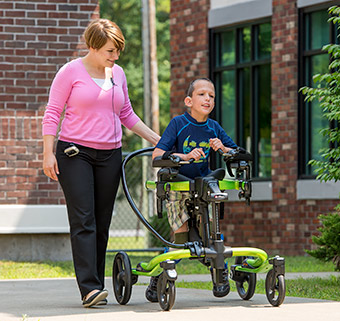Four Essentials to Know Before Writing an Effective Letter of Educational Necessity
| April 2019 1. Understand the requirements of federal law IDEA 2004.
1. Understand the requirements of federal law IDEA 2004.
The Individuals with Disabilities Education Act (IDEA) is a federal law that requires schools to meet the educational needs of students with disabilities. Funds for IDEA are allocated at federal, state, and local levels.
To be eligible for the provisions of IDEA, the student must present with one of the following disabilities: intellectual disability, hearing impairment (including deafness), speech or language impairment, visual impairment (including blindness), emotional disturbance, orthopedic impairment, autism, traumatic brain injury, other health impairment, specific learning disability, deaf-blindness, or multiple disabilities.¹
IDEA ensures “that all children with disabilities have available to them a free appropriate public education (FAPE) that emphasizes special education and related services…” ² This provision of FAPE is in the least restrictive environment (LRE). ³
Within the schools, the Individualized Education Plan (IEP) ensures that a child receives specialized instruction and related services. To qualify for an IEP, the child’s disabilitymust affect his/her educational performance and/or ability to learn and benefit from the general education curriculum, leading to the need for “related services…as may be required to assist a child with a disability to benefit from special education.” ⁴
Supplementary Aids and Services (SAS) are upheld by federal law. These are aids, services, and other supports provided to enable children with disabilities to be educated with nondisabled children to the maximum extent appropriate. ⁵
Assistive technology is a provision of the law as well. AT is defined as “any item, piece of equipment, or product system, whether acquired commercially, off the shelf, modified, or customized, that is used to increase, maintain, or improve the functional capabilities of a child with a disability.” ⁶
2. Understand the mandates of Section 504 regulations.
Section 504 is a federal civil rights law designed to protect the rights of individuals with disabilities enrolled in educational institutions that receive financial assistance from the U.S. Department of Education. Funding for the 504 Plan is at the school district level. The federal government can take funding away from schools that don’t comply.
Section 504 states that the provision of an appropriate education must meet the student's individual educational needs “as adequately as the needs of nondisabled students are met.”⁷ This same holds true for nonacademic settings, such as meals and recess periods.⁸ This civil rights law also guarantees protection for extracurricular activities; for example, a school that operates or sponsors physical education courses or athletics must provide students with disabilities an equal opportunity for participation.⁹
Section 504 has a broader definition of disability than IDEA: the disability must substantially limit one or more basic life activities, such as learning. ¹⁰ A 504 plan provides for services, accommodations, or changes to the learning environment.
Any student with a disability that limits one or more basic life activities can qualify for a 504 plan, but only some students require the support of IDEA. Note: IDEA funds are dedicated for students with an IEP and cannot be used to serve students with 504 plans.
3. Recognize the relevance of the International Classification of Functioning, Disability and Health
The International Classification of Functioning, Disability and Health (ICF) is a framework that describes and organizes information on functioning and disability. It was established by the World Health Organization in 2001. ¹¹
Specific health-related terms have been defined by the ICF. Here are a few sample ICF terms and definitions. ¹²
- Participation is the student’s involvement in a life situation. Participation restrictions are the problems a student experiences in involvement in life situations, as compared to the participation of a student without disability.
- Activity is the action or task completed functionally by the student. Activity limitation is any difficulty the student has in doing the specific activity. This differs from impairment, which is defined as a loss or abnormality in body structure or physiological function.
- Capacity is the student’s abilities in a situation apart from real life. Performance is the interaction of the student with the environment. Environmental factors are those aspects of the student’s life experience that are external to the student, and that have an impact on the student’s functioning, including AT and adaptive equipment.
Knowing these terms well can guide us in framing the appropriate questions and answers to describe the educational necessity of a device. What are the student’s school participation restrictions? (for example, problems with playing with peers during recess.) What are the student’s activity limitations? (for example, difficulties with sitting, eating, walking, or toileting.) What is the student’s capacity, as impacted by impairments (for example, decreased postural control, limited weight bearing ability, or sensory deficits.) What adaptive equipment could address these concerns? How would the adaptive equipment allow the student to participate in the classroom or school environment?
With the ICF terms and definitions, we now better understand the role of assistive technology (AT) and adaptive equipment to bridge the gap between capacity and performance. Adaptive equipment enables interaction of the student with his/her educational environment and thereby increases student involvement in life situations. Our role is to define the strengths and needs of the student as it relates to their learning environment and explain how the adaptive equipment will address the student’s educational goals and enable participation in the school day and routine.
4. Fully understand the meaning of educational relevance and necessity.
Related services and the recommendations that are provided to a student from these services should be both educationally relevant and educationally necessary. ¹³
Educational relevance is when services and supports clearly and directly relate to a specific component of the student’s educational program.
Educational necessity is when the absence of the service or support would interfere with the student’s access to, or participation in, his or her educational program. To truly be defined as necessary, these services and supports also should not create unnecessary gaps, overlaps, or contradictions. Additionally, these services or supports are agreed upon by all those involved, and enable generalization to all environments (that is, without direct specialist involvement.)
References:
(1) Individuals with Disabilities Education Act. (December 2015) IDEA Part B » Subpart A » Section 300.8. Retrieved from https://sites.ed.gov/idea/regs/b/a/300.8
(2) Individuals with Disabilities Education Act. (December 2015) About IDEA/IDEA Purpose. Retrieved from https://sites.ed.gov/idea/about-idea/#IDEA-Purpose
(3) Individuals with Disabilities Education Act. (December 2015) IDEA Part B » Subpart F » Section 300.600 » d » 1. Retrieved from https://sites.ed.gov/idea/regs/b/f/300.600
(4) Individuals with Disabilities Education Act. (December 2015) Section 1401 (26) (A) Statute/Regs Main » Statute » Subchapter I (Part A) » 1401 » 26 » A. Retrieved from https://sites.ed.gov/idea/statute-chapter-33/subchapter-I/1401/26/A
(5) Individuals with Disabilities Education Act. (December 2015) IDEA Part B » Subpart A » Section 300.42. Retrieved from https://sites.ed.gov/idea/regs/b/a/300.42
(6) Individuals with Disabilities Education Act. (December 2015) IDEA Part B » Subpart A » Section 300.5. Retrieved from https://sites.ed.gov/idea/regs/b/a/300.5
(7) Nondiscrimination on the basis of handicap in programs or activities receiving federal financial assistance. Title 34 (Subtitle B, Chapter 1) Section 504. Subpart D, Part 104.33 (b) (1). (November 13, 2000.) Retrieved from https://www2.ed.gov/policy/rights/reg/ocr/edlite-34cfr104.html#S33
(8) Nondiscrimination on the basis of handicap in programs or activities receiving federal financial assistance. Title 34 (Subtitle B, Chapter 1) Section 504. Subpart D, Part 104.34 (b). (November 13, 2000.) Retrieved from https://www2.ed.gov/policy/rights/reg/ocr/edlite-34cfr104.html#S34
(9) Nondiscrimination on the basis of handicap in programs or activities receiving federal financial assistance. Title 34 (Subtitle B, Chapter 1) Section 504. Subpart D, Part 104.37 (c) (1). (November 13, 2000.) Retrieved from https://www2.ed.gov/policy/rights/reg/ocr/edlite-34cfr104.html#S37
(10) Parent and Educator Resource Guide to Section 504 in Public Elementary and Secondary Schools. The Meaning of Disability Under Section 504, pp 3 – 9. (online PDF, pp 8 - 14.) (December 2016) Retrieved from https://www2.ed.gov/about/offices/list/ocr/docs/504-resource-guide-201612.pdf
(11) World Health Organization. (2002) “Towards a common language for functioning, disability, and health.” Retrieved from http://www.who.int/classifications/icf/icfbeginnersguide.pdf?ua=1
(12) ICF E-learning Tool Glossary Terms. (2018) Retrieved from https://www.icf-elearning.com/wp-content/uploads/articulate_uploads/ICF%20e-Learning%20Tool_2018%20-%20Storyline%20output/story_html5.html
(13)Giangreco, M. F. (1996). VISTA: A guide to coordinating educational support services. Educational Relevance and Necessity, Section III Guideline 6. pp 45-51. (online pp 65-71.) Baltimore: Paul H. Brookes. Retrieved from https://scholarworks.uvm.edu/cgi/viewcontent.cgi?article=1000&context=cessfac




